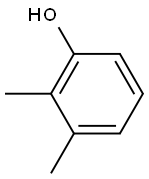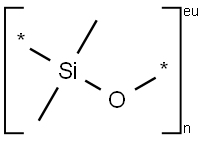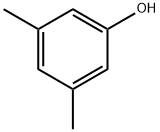2,5-Dimethylphenol
Synonym(s):p-Xylenol;2,5-Dimethylphenol;2,5-DMP, p-Xylenol;2-Hydroxy-p-xylene
- CAS NO.:95-87-4
- Empirical Formula: C8H10O
- Molecular Weight: 122.16
- MDL number: MFCD00002237
- EINECS: 202-461-5
- SAFETY DATA SHEET (SDS)
- Update Date: 2025-12-17 09:49:31

What is 2,5-Dimethylphenol?
Chemical properties
WHITE TO CREAM COLORED CRYSTALS
Chemical properties
2,5-Xylenol has a creosote, sweet, medicinal taste.
Occurrence
Reported found in coffee, smoked fatty fish, processed lean fish, malt whiskey, Scotch blended whiskey, katsuobushi (dried bonito) and kumazasa (Sasa albo-marginata).
The Uses of 2,5-Dimethylphenol
Used to make phenolic resins and (in isomeric mixtures) as an antioxidant for lubricating oils, gasoline, and elastomers. Also used as perfuming agents.
Definition
ChEBI: 2,5-xylenol is a member of the class of phenols that phenol substituted by methyl groups at positions 2 and 5. It has a role as a volatile oil component and an animal metabolite. It derives from a hydride of a p-xylene.
Aroma threshold values
Detection: 400 ppb
Taste threshold values
Taste characteristics at 10 ppm: musty, chemical, stringent and phenolic.
General Description
Colorless to off-white crystalline solid. Odor threshold concentration 0.4 mg/L. Taste threshold concentration 0.5 mg/L.
Air & Water Reactions
2,5-Dimethylphenol is hygroscopic. Insoluble in water.
Reactivity Profile
2,5-Dimethylphenol is incompatible with bases, acid chlorides, acid anhydrides and oxidizing agents. 2,5-Dimethylphenol corrodes steel, brass, copper and copper alloys.
Health Hazard
Symptoms of exposure to this compound may include severe irritation and burns of the skin and eyes; irritation of the respiratory tract, dizziness, stomach pain, exhaustion, coma and damage to the liver or kidneys. Other symptoms include headache, nausea and vomiting. It may cause corrosion of the tissues of the mucous membranes and upper respiratory tract, eyes and skin. Inhalation may result in burning sensation, coughing, wheezing, laryngitis and shortness of breath. Inhalation may be fatal as a result of spasm, inflammation and edema of the larynx and bronchi; chemical pneumonitis and pulmonary edema. Symptoms of exposure to this class of compounds include skin sensitization, profuse sweating, painless blanching or erythema of the skin, intense thirst, diarrhea, cyanosis from methemoglobinemia, hyperactivity, stupor, blood pressure fall, hyperpnea, abdominal pain, hemolysis and convulsions. If death from respiratory failure is not immediate, jaundice and oliguria or anuria may occur.
Fire Hazard
Flash point data for 2,5-Dimethylphenol are not available. 2,5-Dimethylphenol is probably combustible.
Safety Profile
Poison by ingestion. Moderately toxic by an unspecified route. When heated to decomposition it emits acrid smoke and irritating fumes. Questionable carcinogen with experimental tumorigenic data. Used in disinfectants, solvents, pharmaceuticals, plasticizers, and wetting agents. See also other xylenol entries.
Purification Methods
Crystallise 2,5-xylenol from EtOH/ether. [Beilstein 6 IV 3164.]
Properties of 2,5-Dimethylphenol
| Melting point: | 75-77 °C |
| Boiling point: | 212 °C(lit.) |
| Density | 0.971 g/mL at 25 °C(lit.) |
| vapor pressure | 0.208 hPa (25 °C) |
| refractive index | 1.5120 |
| FEMA | 3595 | 2,5-XYLENOL |
| Flash point: | 85 °C |
| storage temp. | Store below +30°C. |
| solubility | 3.54g/l slightly soluble |
| form | Crystals |
| pka | pK1:10.22 (25°C) |
| color | slightly brown |
| Odor | at 0.10 % in propylene glycol. sweet naphthyl phenolic smoke bacon |
| explosive limit | 1.4%(V) |
| Water Solubility | 1 g/100 mL (60 ºC) |
| Merck | 14,10082 |
| JECFA Number | 706 |
| BRN | 1099260 |
| Exposure limits | ACGIH: TWA 1 ppm |
| CAS DataBase Reference | 95-87-4(CAS DataBase Reference) |
| NIST Chemistry Reference | Phenol, 2,5-dimethyl-(95-87-4) |
| EPA Substance Registry System | 2,5-Dimethylphenol (95-87-4) |
Safety information for 2,5-Dimethylphenol
| Signal word | Danger |
| Pictogram(s) |
 Corrosion Corrosives GHS05  Skull and Crossbones Acute Toxicity GHS06  Environment GHS09 |
| GHS Hazard Statements |
H314:Skin corrosion/irritation H411:Hazardous to the aquatic environment, long-term hazard |
| Precautionary Statement Codes |
P260:Do not breathe dust/fume/gas/mist/vapours/spray. P273:Avoid release to the environment. P280:Wear protective gloves/protective clothing/eye protection/face protection. P303+P361+P353:IF ON SKIN (or hair): Remove/Take off Immediately all contaminated clothing. Rinse SKIN with water/shower. P305+P351+P338:IF IN EYES: Rinse cautiously with water for several minutes. Remove contact lenses, if present and easy to do. Continuerinsing. |
Computed Descriptors for 2,5-Dimethylphenol
| InChIKey | NKTOLZVEWDHZMU-UHFFFAOYSA-N |
2,5-Dimethylphenol manufacturer
JSK Chemicals
New Products
4,4-Difluoropiperidine hydrochloride tert-butyl 9-methoxy-3-azaspiro[5.5]undecane-3-carboxylate Indole Methyl Resin N-Isopropylurea N,N-Dicyclohexylcarbodiimide(DCC) MELDRUMS ACID 5-METHYLISOXAZOLE-4-CARBOXYLIC ACID Magnessium Bis glycinate Zinc ascorbate 1-bromo-2-butyne 2-acetamidophenol 9(10H)-anthracenone Erythrosin B, 4-Piperidinopiperidine 2-((4-morpholinophenylamino) (methylthio) methylene) malononitrile 2,4-dihydroxybenzaldehyde 3-(4-morpholinophenylamino)-5-amino-1H-pyrazole-4-carbonitrile Methyl 2-methylquinoline-6-carboxylate 2,6-dichloro-4-nitropyridine 4-Bromo-2-chlorobenzonitrile 2-(benzylamino)acetic acid hydrochloride 4-(tert-Butoxycarbonylamino)but- 2-ynoic acid 3,4-dihydro-2H-benzo[b][1,4]dioxepine 1-Phenyl-1-cycloprppanecarboxylicacidRelated products of tetrahydrofuran








You may like
-
 95-87-4 99%View Details
95-87-4 99%View Details
95-87-4 -
 para-Xylenol 99%View Details
para-Xylenol 99%View Details
95-87-4 -
 95-87-4 2,5-Dimethylphenol, 98% 99%View Details
95-87-4 2,5-Dimethylphenol, 98% 99%View Details
95-87-4 -
 2,5-Dimethylphenol CAS 95-87-4View Details
2,5-Dimethylphenol CAS 95-87-4View Details
95-87-4 -
 2,5 Dimethylphenol CAS 95-87-4View Details
2,5 Dimethylphenol CAS 95-87-4View Details
95-87-4 -
 2,5-Dimethyl Phenol pure CAS 95-87-4View Details
2,5-Dimethyl Phenol pure CAS 95-87-4View Details
95-87-4 -
 2,5-Dimethylphenol CAS 95-87-4View Details
2,5-Dimethylphenol CAS 95-87-4View Details
95-87-4 -
 2,5-Dimethylphenol CAS 95-87-4View Details
2,5-Dimethylphenol CAS 95-87-4View Details
95-87-4
